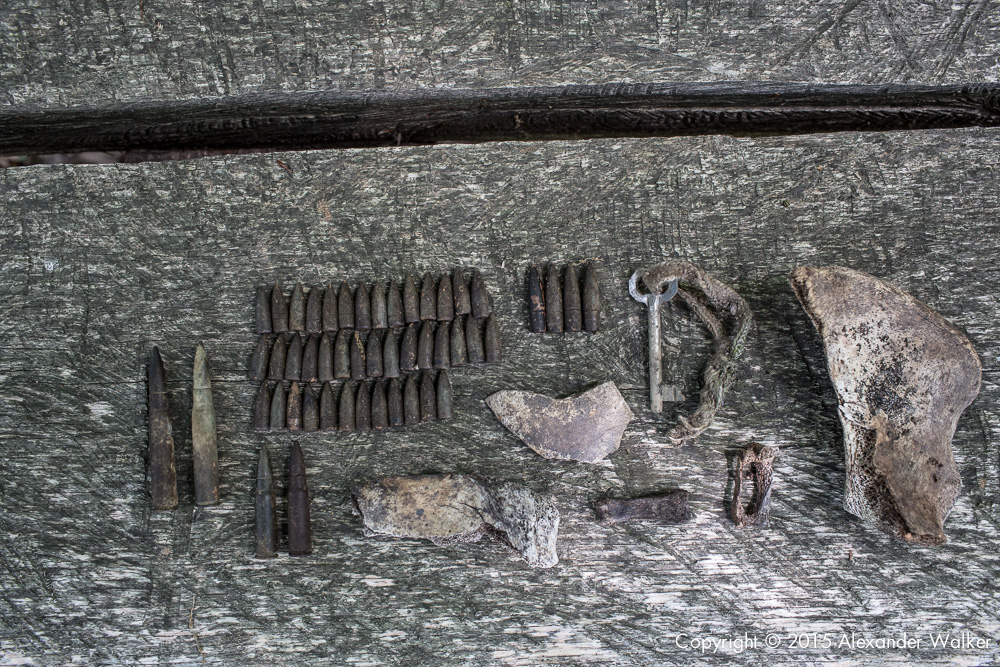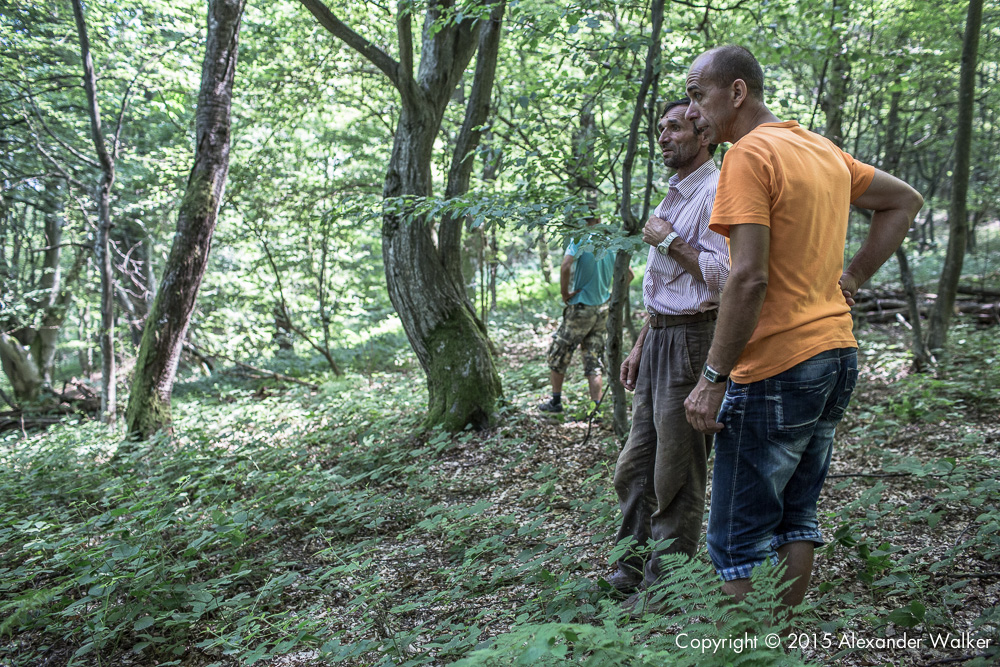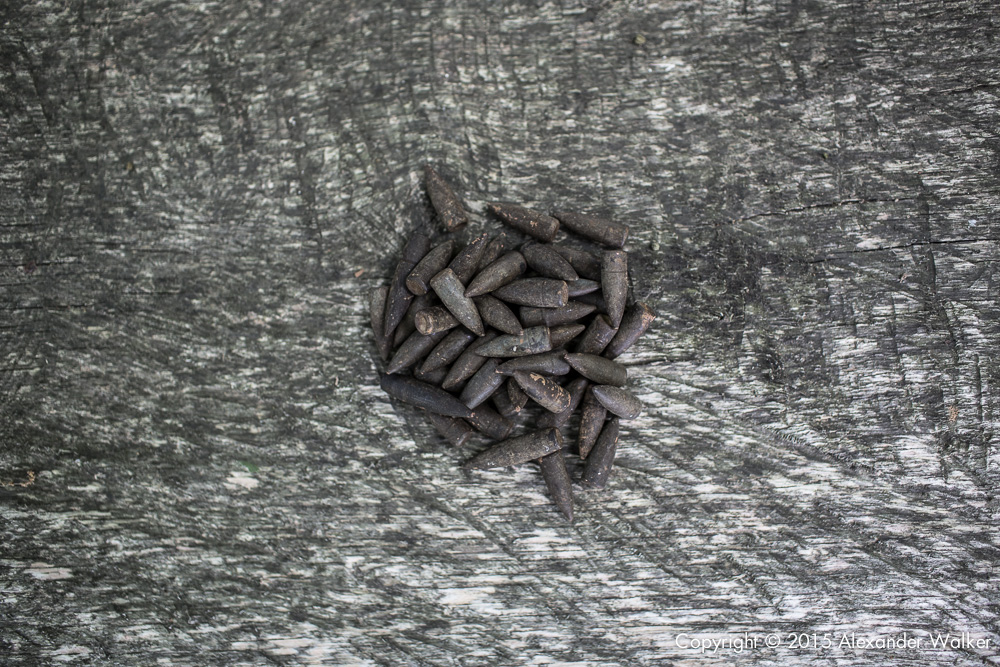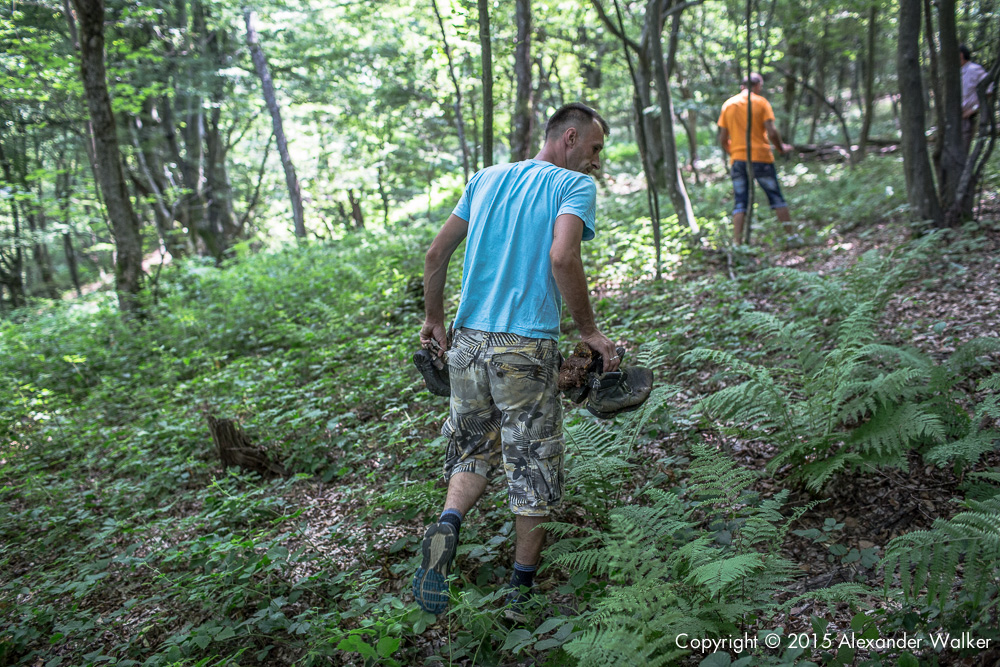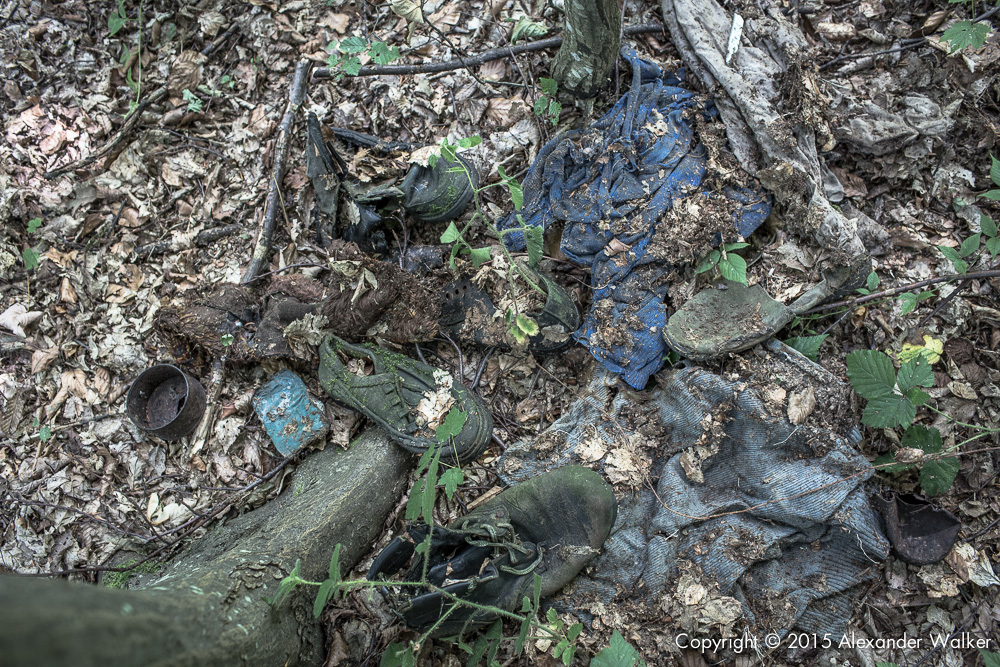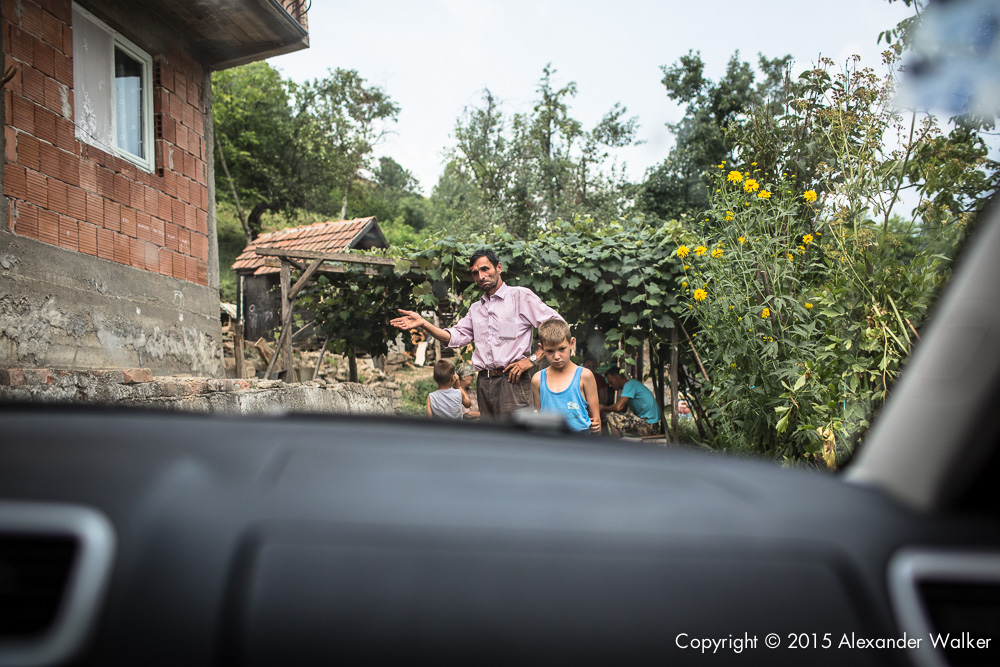Today was one of the most difficult days of the assignment, both physically but also mentally. We set out to walk a section of the route guided by two survivors who took the exact same cross country path 20 years ago almost to the day. After Srebrenica fell Men of all ages as well as military personal ARBiH's 28th Division took to the woods to form a column and attempt a breakthrough towards Bosnian government-held territory in the north.
After a 2 hour walk, in 42 degree through heavily wooded areas, neck deep fern bushes, and mountainous inclines, we reached the area which the two gentlemen recall most, Kamenica Hill.
During the night, poor visibility, fear of mines and panic induced by artillery fire split the column in two.
On the afternoon of 12 July, the front section emerged from the woods and crossed the asphalt road from Konjevic Polje and Nova Kasaba. Around 18.00 hours, the RS Army located the main part of the column still in the hilly area around Kamenica. Around 20.00 hours this part of the column, led by the municipal authorities and the wounded, started descending Kamenica Hill towards the road. After a few dozen men had crossed, soldiers of the RS Army arrived from the direction of Kravica in trucks and armored vehicles including a white vehicle with UNPROFOR symbols, calling out for Bosniaks over the loudspeaker to surrender.
It was around this time that yellow smoke was observed, followed by observations of strange behaviour, including suicides, hallucinations and members of the column attacking one another. Numerous survivors interviewed by Human Rights Watch claimed they were attacked with a chemical agent that caused hallucinations and disorientation. (Gen. Zdravko Tolimir was an advocate of the use of chemical weapons against the ArBiH.
Heavy shooting and shelling began, which continued into the night. The armed members of the column returned fire and all scattered. Survivors describe a group of at least 1000 engaged at close range by small arms. Hundreds appear to have been killed as they fled the open area and some were said to have killed themselves to escape capture.
RS Army and Ministry of Interior persuaded members of the column to surrender by promising them protection and safe transportation towards Tuzla under UNPROFOR and Red Cross supervision. Appropriated UN and Red Cross equipment was used to deceive the refugees into believing the promises. Surrendering prisoners' personal belongings were confiscated and some were executed on the spot.
The rear of the column lost contact with the front and panic broke out. Many people remained in the Kamenica Hill area for a number of days, unable to move on with the escape route blocked by Serb forces. Thousands of Bosniaks surrendered or were captured. Some prisoners were ordered to summon friends and family members from the woods. There were reports of Serb forces using megaphones to call on the marchers to surrender, telling them that they would be exchanged for Serb soldiers held captive by Bosniak forces. It was at Kamenica that VRS personnel in civilian dress were reported to have infiltrated the column. Wikipedia: Source
The two men, who work closely with relatives of people still missing, as well as the organisations in the area who now use advanced DNA testing to identify remains, spent 15 mins scouring the area. What they came back with in this short amount of time was truly shocking. 49 bullets, most of which were spent rounds, as well as a few live. Various pieces of bone, including spine and skull, and a house key. The surrounding area is still scattered with remains after the shelling and indiscriminate killing and it is very honourable of these two men, who experienced this atrocity first hand to return from time to time to the location in order to look for bones and other features in the hope to identify more victims.



